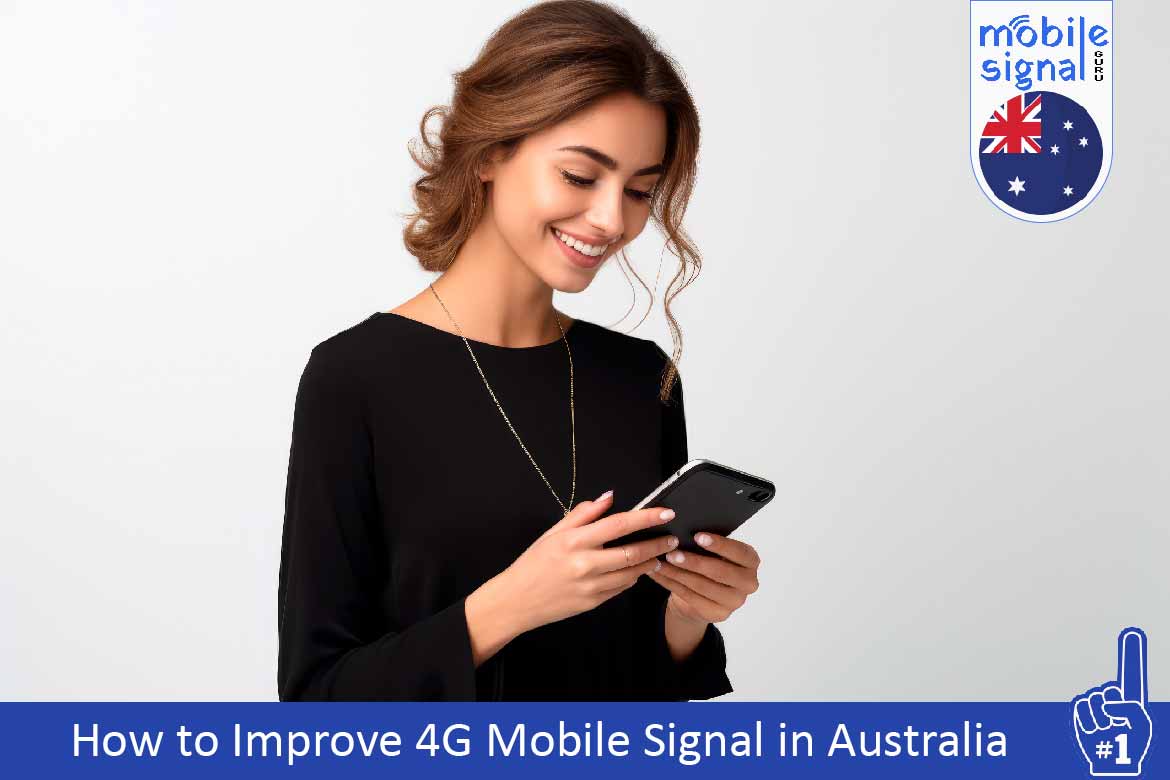In Australia, staying connected through mobile networks is essential, whether for business, staying in touch with family, or using apps. However, many Australians experience weak 4G signals, especially in rural or remote areas, where mobile coverage can be patchy.
In this article, we’ll explore practical and easy ways to improve your 4G mobile signal. We will discuss why mobile signals might be weak, solutions to boost your signal, and tips to get the best possible connection in different situations across Australia.
Why Is 4G Mobile Signal Weak in Some Areas of Australia?
Australia’s vast land, unique geography, and remote regions often cause mobile signal challenges. Several factors can affect your 4G mobile signal strength:
1. Distance from Cell Towers
In rural or remote areas, there may be few cell towers available, making it hard for your phone to catch a strong signal. The further you are from the nearest tower, the weaker your 4G connection will be.
2. Obstacles Blocking the Signal
Physical barriers such as buildings, hills, trees, and even mountains can block or weaken the 4G signal. This is a common problem in both city and rural areas.
3. Network Congestion
During peak hours, many people use their mobile phones at the same time. This can lead to network congestion, which slows down speeds and reduces the signal quality.
4. Weather Conditions
Severe weather like heavy rain, storms, or extreme heat can interfere with mobile signals. This is a common issue in many parts of Australia, particularly during the stormy summer season.
5. Building Materials
Some building materials, such as concrete, metal, or thick walls, can block 4G signals from entering homes or offices. This is often why people experience weak signals indoors but stronger signals outdoors.
How to Improve Your 4G Mobile Signal in Australia
Now that we’ve discussed some reasons for weak signals, let’s explore practical solutions for improving your 4G connection. These tips are useful whether you’re in a busy city or the remote Australian outback.
1. Use a Mobile Signal Booster
One of the most effective ways to improve 4G signal is by using a mobile signal booster. A mobile signal booster captures the existing weak 4G signal, amplifies it, and rebroadcasts it inside your home, office, or vehicle.
A mobile signal booster has three main components:
- Outdoor Antenna: This is installed outside to capture the weak signal.
- Amplifier: Boosts the captured signal.
- Indoor Antenna: Rebroadcasts the stronger signal inside.
By installing a signal booster, you can significantly improve your 4G signal strength, reduce dropped calls, and enjoy faster data speeds. Make sure to choose a Telstra, Optus, or Vodafone-compatible booster, depending on your mobile provider.
2. Move to a Better Location
Sometimes, a simple change of location can make a big difference in signal strength. Try moving closer to a window or going outside, where there are fewer obstacles. In rural areas, positioning yourself at a higher elevation, such as a hill or upstairs in your house, can help improve the signal.
3. Switch Between 4G and 3G Networks
In some areas, 4G signals might be weak, but 3G signals could be stronger. Switching your phone to 3G mode may improve your signal in areas with poor 4G coverage. Although 3G data speeds are slower, you might get a more stable connection, which can be helpful for calls and light internet use.
4. Use Wi-Fi Calling
If you have access to a reliable Wi-Fi network at home or in the office, enable Wi-Fi calling on your phone. Wi-Fi calling lets you make and receive calls using your internet connection instead of the mobile network. This is a great solution for areas with poor mobile signal but good Wi-Fi coverage.
5. Update Your Phone Software
Outdated phone software can sometimes affect how well your phone connects to the network. Make sure your phone is running the latest software updates from your mobile provider. These updates often include improvements to network connectivity, which can help improve 4G signal reception.
6. Switch Mobile Networks
Not all mobile networks have the same coverage in every part of Australia. For example, Telstra generally has better rural coverage, while Optus and Vodafone perform well in cities. If you consistently experience poor 4G signal with your current provider, it might be worth switching to another network that offers better coverage in your area.
You can use coverage maps provided by Telstra, Optus, or Vodafone to check which provider offers the best signal in your location.
7. Limit Data-Heavy Apps
When your 4G signal is weak, avoid using apps that consume a lot of data, such as video streaming services or large downloads. These apps can slow down your connection even more. Instead, limit your phone’s data usage to essential tasks like checking emails or browsing light websites when signal strength is low.
8. Install a Femtocell
A femtocell is a small device that acts as a mini mobile base station. It connects to your home’s internet and provides strong mobile coverage indoors. This is an excellent solution for homes or offices in areas with weak 4G signal. However, femtocells are typically network-specific, so you’ll need to get one from your mobile provider.
9. Avoid Signal Blockers
Signal blockers, also known as signal jammers, are illegal in Australia. However, certain materials and devices in your home could unintentionally block mobile signals. For example, thick concrete walls, metal roofing, or certain types of insulation can weaken your signal. If possible, try to avoid building materials that block signals, especially in rooms where you need strong mobile reception.
Choosing the Right Signal Booster in Australia
When selecting a 4G signal booster in Australia, it’s important to ensure it meets the following criteria:
1. Network Compatibility
Make sure the signal booster is compatible with your mobile provider’s frequencies. In Australia, Telstra, Optus, and Vodafone operate on different 4G frequency bands. Check the product description to confirm compatibility with your specific network.
2. Coverage Area
Consider the size of the area you need to cover with the boosted signal. Some boosters are designed for small spaces, such as a single room, while others can cover an entire home or office.
3. Legal Approval
It’s important to choose a signal booster that complies with Australian telecommunications regulations. Only use signal boosters approved by the Australian Communications and Media Authority (ACMA). Using unapproved boosters can cause interference with mobile networks and may result in fines. Our signal boosters are built in accordance withe ACMA regulations and you can buy and use them in Australia to improve 4G mobile signals.
4. Ease of Installation
Our signal boosters are easy to install yourself, while others may require professional installation. Look for a product that fits your technical comfort level, or hire a professional to ensure optimal setup.
Conclusion
Improving your 4G mobile signal in Australia is achievable with the right solutions. Whether you’re living in a busy city or a rural area, these tips can help you get the most out of your mobile connection.
From using a mobile signal booster to switching networks or enabling Wi-Fi calling, there are several ways to enhance your signal strength and enjoy better connectivity. By understanding the factors that affect signal strength and applying these solutions, you can reduce frustration and stay connected wherever you are in Australia.
Always choose network-approved devices and check your mobile provider’s coverage to ensure the best possible experience with your 4G connection. With the right approach, you can enjoy reliable mobile service and faster data speeds, no matter where you are.
 Denmark (DKK)
Denmark (DKK) France (EUR)
France (EUR) Germany (EUR)
Germany (EUR) Ireland (EUR)
Ireland (EUR) Italy (EUR)
Italy (EUR) Malta (EUR)
Malta (EUR) Netherlands (EUR)
Netherlands (EUR) New Zealand (NZD)
New Zealand (NZD) Norway (NOK)
Norway (NOK) Spain (EUR)
Spain (EUR) Sweden (SEK)
Sweden (SEK) UAE (AED)
UAE (AED) United Kingdom (GBP)
United Kingdom (GBP) Global Site (USD)
Global Site (USD)
